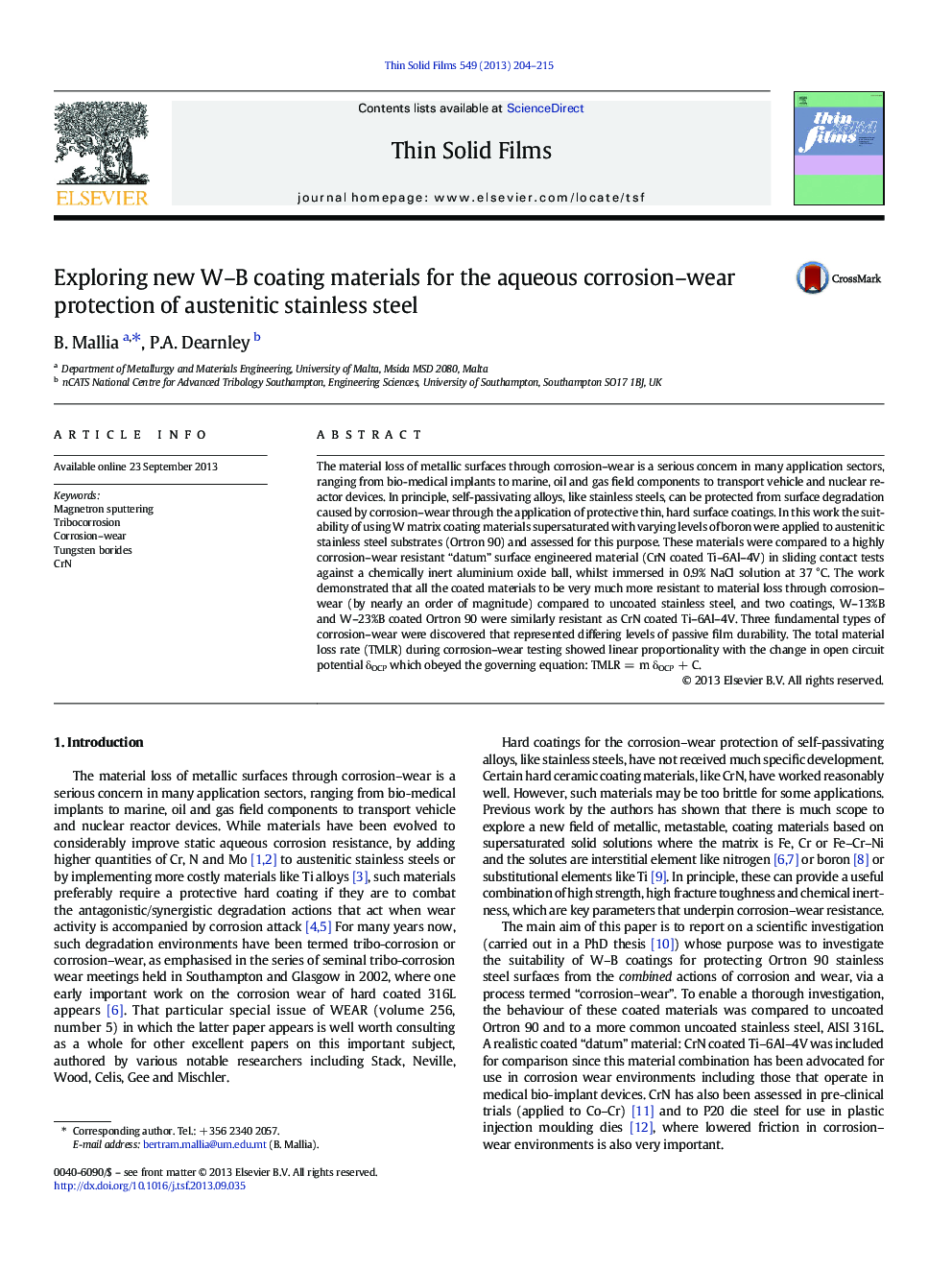| Article ID | Journal | Published Year | Pages | File Type |
|---|---|---|---|---|
| 1665752 | Thin Solid Films | 2013 | 12 Pages |
Abstract
The material loss of metallic surfaces through corrosion-wear is a serious concern in many application sectors, ranging from bio-medical implants to marine, oil and gas field components to transport vehicle and nuclear reactor devices. In principle, self-passivating alloys, like stainless steels, can be protected from surface degradation caused by corrosion-wear through the application of protective thin, hard surface coatings. In this work the suitability of using W matrix coating materials supersaturated with varying levels of boron were applied to austenitic stainless steel substrates (Ortron 90) and assessed for this purpose. These materials were compared to a highly corrosion-wear resistant “datum” surface engineered material (CrN coated Ti-6Al-4V) in sliding contact tests against a chemically inert aluminium oxide ball, whilst immersed in 0.9% NaCl solution at 37 °C. The work demonstrated that all the coated materials to be very much more resistant to material loss through corrosion-wear (by nearly an order of magnitude) compared to uncoated stainless steel, and two coatings, W-13%B and W-23%B coated Ortron 90 were similarly resistant as CrN coated Ti-6Al-4V. Three fundamental types of corrosion-wear were discovered that represented differing levels of passive film durability. The total material loss rate (TMLR) during corrosion-wear testing showed linear proportionality with the change in open circuit potential δOCP which obeyed the governing equation: TMLR = m δOCP + C.
Related Topics
Physical Sciences and Engineering
Materials Science
Nanotechnology
Authors
B. Mallia, P.A. Dearnley,
